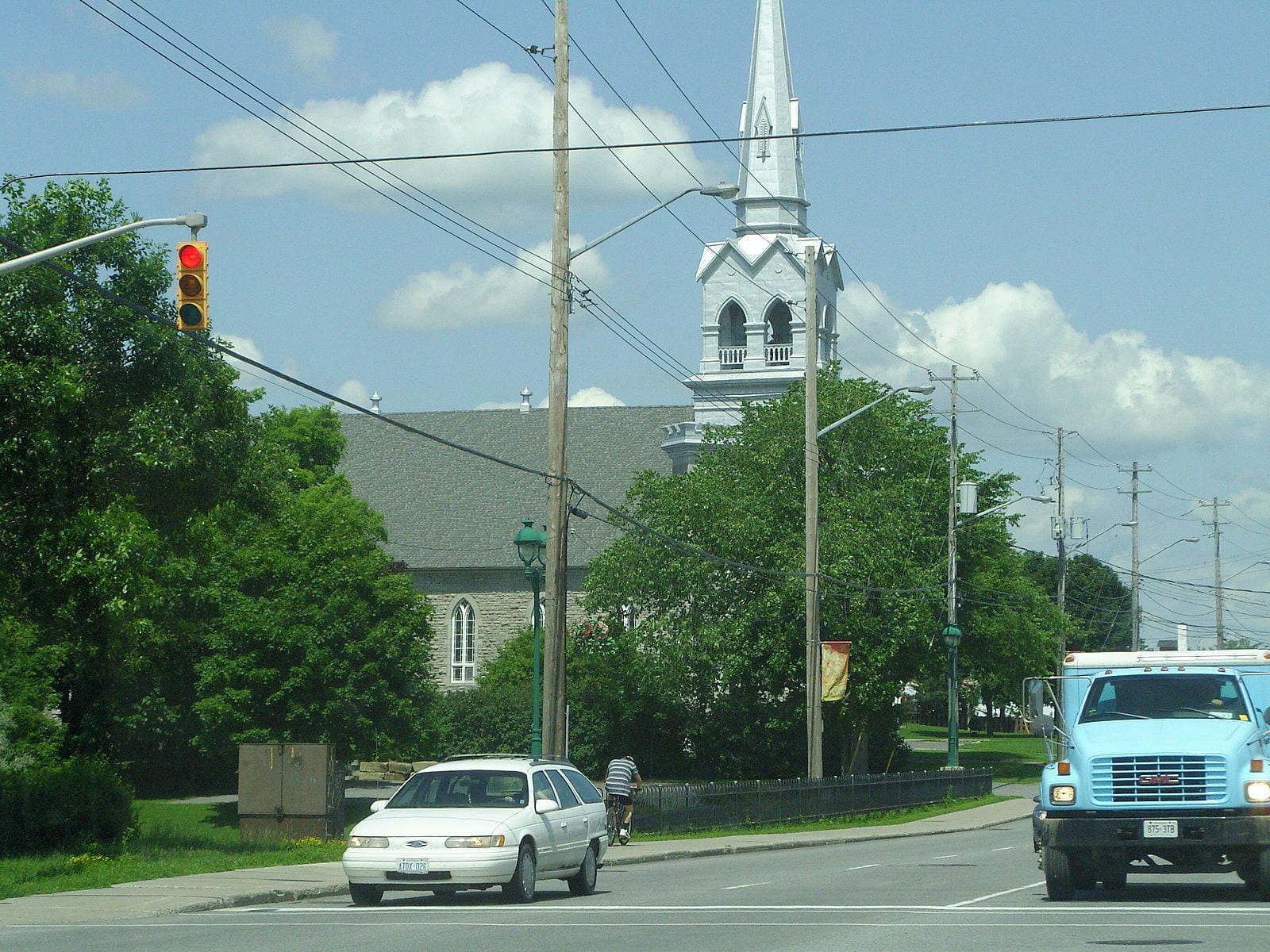Francophone vitality in Orléans and the United Counties of Prescott and Russell

In 2001, the municipality of Orléans merged with neighbouring Ottawa. In this high-growth sector of the National Capital, a third of the some 127,000 inhabitants (according to the 2016 census) are native French speakers. At the centre of the old town of Orléans, which was majority Francophone, there is still a high concentration of Francophone institutions such as schools, professional offices, stores, and numerous leisure activities, including those offered by the Shenkman Arts Centre, whose programming includes many French-language productions. The Société franco-ontarienne du patrimoine et de l’histoire d’Orléans has installed 32 interpretive history displays on St. Joseph Boulevard to recall the cultural, economic and social life of Francophones in Orléans in the mid-20th century. About ten kilometres to the east, the Cumberland Heritage Village Museum takes visitors back in time 100 years to discover how Francophone and Anglophone communities co-existed in the farming villages in the counties of Prescott and Russell.
To learn more…
Orléans, a dynamic Francophone community
Until the 1950s, Orléans was very much a majority-Francophone farming village. Between 1971 and 1981, its population suddenly swelled from 6000 to 24,000 inhabitants. This first phase of explosive demographic growth transformed the village into a populous, multicultural suburb. In 1979, this transformation led to the creation of an organization to promote Francophones in Orléans, the Mouvement d’implication francophone d’Orléans (MIFO), which today has some 300 employees, 60 partners and several dozen volunteers. More than 30,000 people participate in its various activities. Thanks to its initiatives, the MIFO helps create a rich and stimulating living environment for Francophones, who still make up a large part of the population of Orléans, or who have moved there to take advantage of the decidedly Francophone way of life that has endured in this part of Ontario.
In addition to the downtown area, where Francophone services and businesses and the 32 interpretive displays on St. Joseph Boulevard are concentrated, as well as the Maison du patrimoine that the Société franco-ontarienne du patrimoine et de l’histoire d’Orléans has recently opened a bit further away, visitors can enjoy several public activities, mostly organized by the MIFO. In the large 500-seat Harold Shenkman Hall, or in the smaller Richcraft Theatre at the Shenkman Arts Centre, all kinds of shows are regularly presented: music, humour, and theatre. The Galerie d’art Eugène-Racette also presents a dozen regional art exhibitions every year. Biweekly showings of French films take place at Cinéstarz Orléans, and every year the Festival Objectif Cinéma delights film-lovers in the region. The MIFO also offers a large variety of courses for adults in the community, courses and camps for youths, preschool daycare services, and services for emerging artists. It runs music, theatre and dance schools. The Séraphin Marion Centre is a meeting place for retirees and pre-retirees, offering a wide choice of French-language courses and activities.
The Société franco-ontarienne du patrimoine et de l’histoire d’Orléans (SFOPHO), created in 2011 to unite individual, community, public and private efforts to promote the Francophone heritage and history of Orléans, recently associated with the producer of the big-budget community show L’écho d’un peuple, which was originally presented at La Nation from 2004 to 2008, in order to bring it back to the stage in Orléans. This production highlights the history of the Franco-Ontarian community. The SFOPHO intends to continue to expand its heritage and historical services in Orléans.
Cumberland Heritage Village Museum
Ten minutes east of Orléans, the Cumberland Heritage Village Museum is a collection of 14 historic buildings that allow visitors to explore a regional village from the 1920s and 1930s. During this period of transition, the traditional rural life that depended largely on human and animal strength gave way to mechanical and electrical modernity. Watson’s Garage is a good example. Housed in a building constructed in 1925 as a bicycle shop, it became the centre of maintenance and repair for motor vehicles. In Foubert House, electrical appliances and a telephone can be seen alongside a traditional wood stove. The small house built by François Dupuis around 1820, the oldest in the Village Museum, contrasts with the more spacious houses dating from the early 20th century, such as the Jean-Baptiste Duford farmhouse. The A.E. McKeen general store illustrates the consumption habits of this era. The still-functioning sawmill, equipped with a diesel motor, is a reminder that small local manufacturing could not compete with the large industrial mills. Visitors enter the Cumberland Heritage Village Museum through the old gate, which speaks to the importance of the railway for rural residents before automobiles were widely available.
Francophones in the United Counties of Prescott and Russell
The region of Cumberland, Orléans, Ottawa, and further east Hawkesbury, Casselman, St. Albert and Embrun, in the counties of Prescott and Russell, has the highest proportion of Francophones in Ontario. These French-Canadians arrived from neighbouring Quebec in large numbers starting in the mid-19th century, and still formed the majority of the population of the counties in 1911. Today, there are numerous Francophones in this region, where you can still hear French being spoken on the street and in stores.





